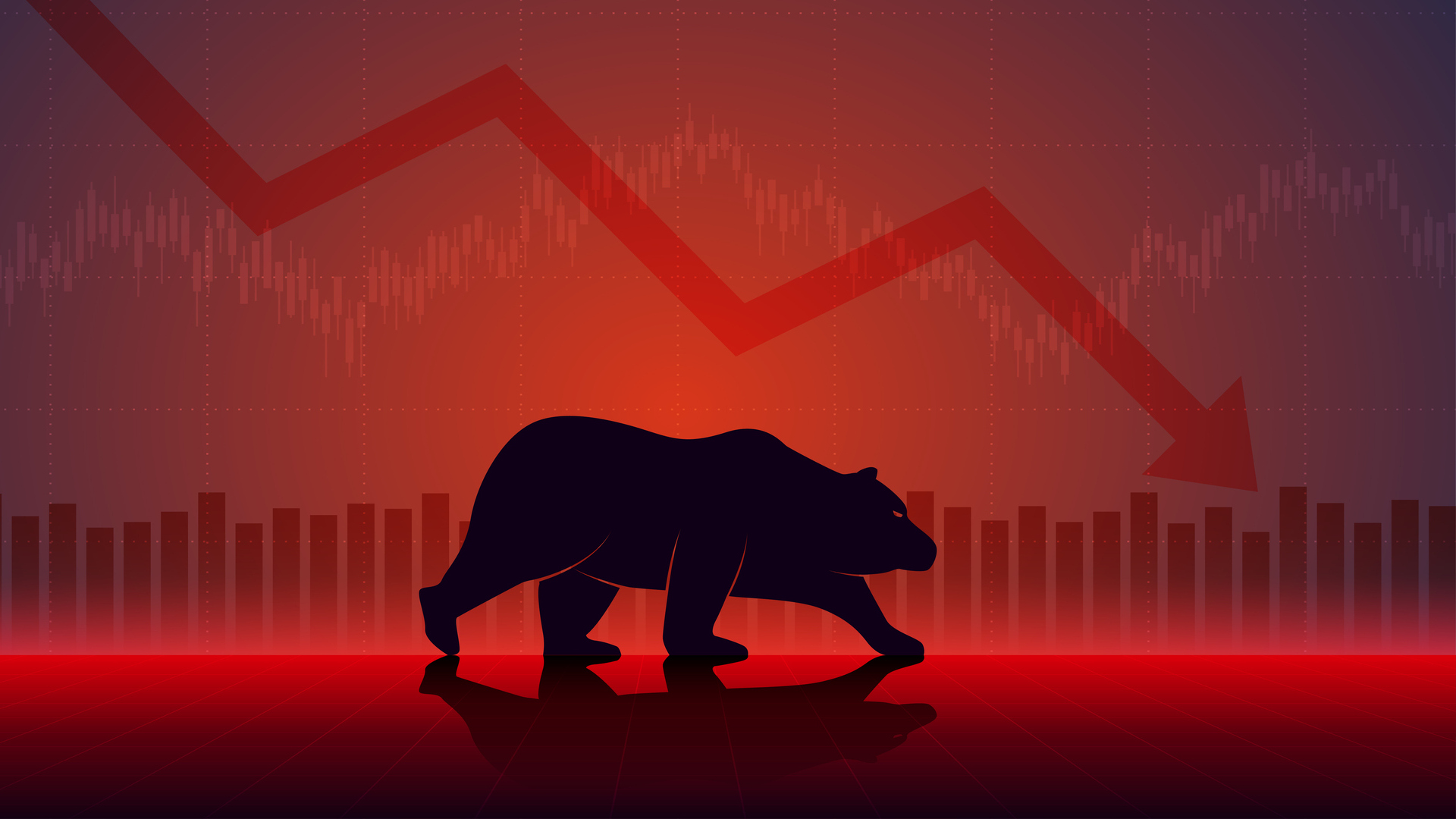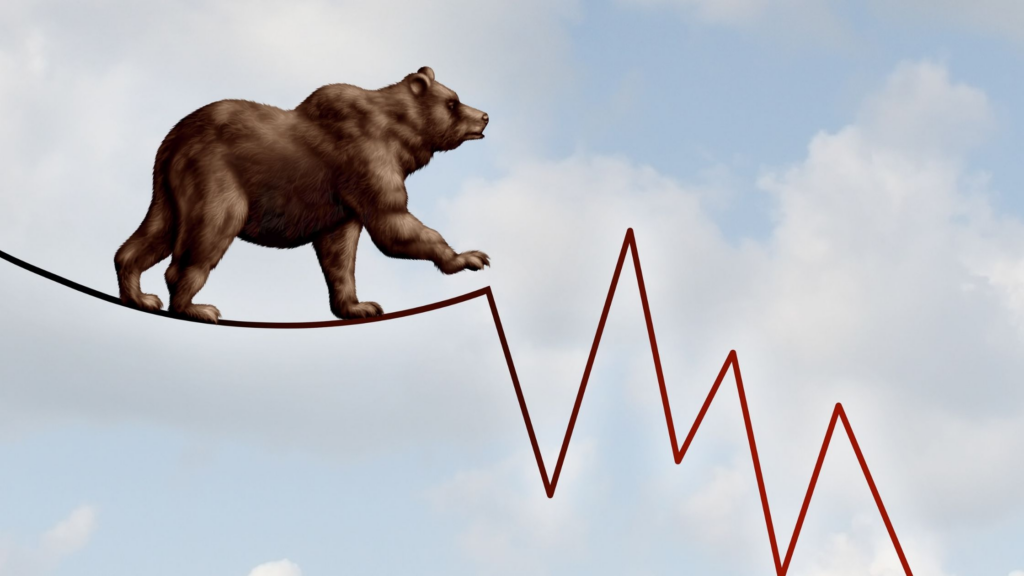
Invest in Bear Market: What Exactly Is a Bear Market?
Invest in Bear Market: A bear market occurs when a market’s prices fall for an extended period of time. According to Investopedia, “it typically describes a condition in which securities prices fall 20% or more from recent highs amid widespread pessimism and negative investor sentiment.”
Bear markets, in which assets fall 20% from recent highs, are among the most terrifying market events. However, do not stop investing. Many investors are terrified when they hear the words “bear market.” However, these severe market downturns are unavoidable and frequently relatively brief, especially when compared to the duration of bull markets, when the market is rising in value. Bear markets can even present attractive investment opportunities. Here’s more on what a bear market is and how you can prepare your portfolio to survive until the bear turns into a bull.
Stefan Marcu, Senior Partner at global management consulting firm Kearney, said at the World Economic Forum’s Annual Meeting in Davos: “Right now, the market is dominated by commodities, such as agricultural commodities and metals. Unfortunately, it is not a market conducive to raising capital for expansion. Let’s hope it’s only temporary.”
Companies with weak fundamentals may face “significant issues in the coming months or years,” he says. Depending on how long it lasts, it may begin to affect job markets or job security.
Invest in Bear Market: What causes bear markets and how long do they last?

A bear market usually occurs just before or after the economy enters a recession, but this is not always the case. Investors closely monitor key economic indicators such as hiring, wage growth, inflation, and interest rates to determine when the economy is slowing.
When investors see a shrinking economy, they expect corporate profits to fall in the near future. As a result, they sell stocks, causing the market to fall. A bear market can foretell of increased unemployment and difficult economic times ahead.
Invest in Bear Market: Bear markets are typically shorter than bull markets, lasting 363 days on average, compared to 1,742 days for bull markets. According to Invesco data, they are also less statistically severe, with average losses of 33% compared to bull market average gains of 159%. The coronavirus bear market, which began on March 11, 2020, quickly transitioned into a bull market, though the full economic impact has yet to be determined.
Invest in Bear Market: Investing During a Bear Market

Invest in Bear Market in such a volatile market requires courage and foresight. A falling stock market can also be an opportunity for people with long time horizons, if you can handle it.
But I wouldn’t invest in stocks until I was confident that I could pay my bills first. Once the critical expenses are deducted, and as long as you are willing to accept some short-term losses, broadly diversified, low-cost index funds are a good way to invest in the overall stock market. This method eliminates the risk of holding the wrong stocks at the wrong time.
Invest in Bear Market: Make a friend of dollar-cost averaging
Assume the price of a stock in your portfolio falls by 25%, from $100 to $75 per share. If you have money to invest and want to buy more of this stock, it can be tempting to try to buy when the price appears to have plummeted.
The problem is that you’ll almost certainly be wrong. That stock may not have dropped to $75 per share; rather, it may have dropped 50% or more from its high. This is why attempting to “time” the market or pick the bottom is a dangerous endeavor.
Invest in Bear Market: A more prudent approach is to add money to the market on a regular basis using a strategy known as dollar cost averaging. Dollar-cost averaging is the practice of investing money in roughly equal amounts over time. This helps to smooth out your purchase price over time, preventing you from investing all of your money in a stock at its peak (while still taking advantage of market dips). There is no doubt that bear markets can be frightening, but the stock market has shown that it will eventually recover. Bear markets can be good opportunities to buy stocks at lower prices if you change your perspective and focus on potential gains rather than potential losses.
Invest in Bear Market: Diversify your investments
Speaking of picking up stocks at lower prices, increasing the diversification of your portfolio so that it includes a mix of different assets is another valuable strategy, bear market or not. During bear markets, all of the companies in a given stock index, such as the S&P 500, fall but not always by the same amount. That is why having a well-diversified portfolio is essential. It helps to minimize your portfolio’s overall losses if you invest in a mix of relative winners and losers.
If only you could predict who would win and who would lose. Because bear markets typically precede or coincide with economic recessions, investors often prefer assets that provide a consistent return regardless of what is happening in the economy during these times.
- Stocks that pay dividends. Even if stock prices aren’t rising, many investors prefer to be compensated in the form of dividends. That is why, during bear markets, companies that pay higher-than-average dividends will be appealing to investors. (Are you interested in dividends? See our list of the top 25 dividend stocks.)
- Bonds. Bonds are also an appealing investment during stock market downturns because their prices frequently move in the opposite direction of stock prices. Bonds are an important part of any portfolio, but adding more high-quality, short-term bonds to your portfolio may help alleviate the pain of a bear market.
Invest in Bear Market: Invest in industries that perform well during recessions.
Invest in Bear Market in specific sectors is possible through index funds or exchange-traded funds that track a market benchmark. Investing in a consumer staples ETF, for example, will expose you to companies in that industry, which tends to be more stable during recessions. Because each fund holds shares in multiple companies, an index fund or ETF provides greater diversification than investing in a single stock.
If you want to add some stabilizing assets to your portfolio, look for sectors that perform well during market downturns. Consumer staples and utilities, for example, fare better than others in bear markets.
Invest in Bear Market: Consider the long term
All investors are put to the test during bear markets. While these are trying times, history suggests that the market will recover quickly. And, if you’re investing for the long term, such as for retirement, bear markets will outnumber bull markets. Short-term goals (those that can be accomplished in less than five years) should not be invested in the stock market.
Resisting the urge to sell investments when markets fall is difficult, but it’s one of the best things you can do for your portfolio. If you find it difficult to keep your hands off your investments during a bear market,
FAQ
What stocks perform well during a bear market?
Invest in Bear Market: They are frequently non-cyclical stocks that are unaffected by economic downturns or tightened liquidity. These companies typically operate in strong industries with consistent earnings. In bear markets, consumer staples, commodities, precious metals, utilities, health care, and transportation stocks typically receive the most attention.
How long will the 2022 bear market last?
Let’s see how this goes. The S&P 500 entered a bear market on June 13th 2022, but the market began to fall on January 3rd 2022. With this date as the beginning of the current official bear market, the average bear market of 289 days means it will end on October 19, 2022.
How long does a typical bear market last?
Since 1928, the S&P 500 Index has experienced 26 bear markets. However, there have been 27 bull markets, with stocks rising significantly over time. Bear markets are typically short-lived. A bear market lasts an average of 289 days, or approximately 9.6 months.
Will a bear market occur in 2022?
The benchmark S&P 500 index of US stocks officially entered “bear market” territory in June 2022. This represents a drop of more than 20% from the index’s peak value.
What is the record for the longest bear market?
The longest bear market since 1950 lasted 929 days, while the shortest lasted 33 days. There have only been three bear markets since 2000, not including this one. One of them was the world’s shortest. Even the longest bear markets have always given way to bull markets.
Is it best to invest in stocks during a bear market?
Yes, if you’re in it for the long haul, now is a great time to buy stocks. Prices are much lower for buyers than they were at the start of the year because we are in a bear market, which simply means that the stock market has fallen at least 20% from its peak.
Is the market currently in a bear market?
Since the end of WWII, there have been 11 official bear markets, defined as a 20% drop from the previous all-time high. If no new all-time highs are established, we will remain in a bear market.